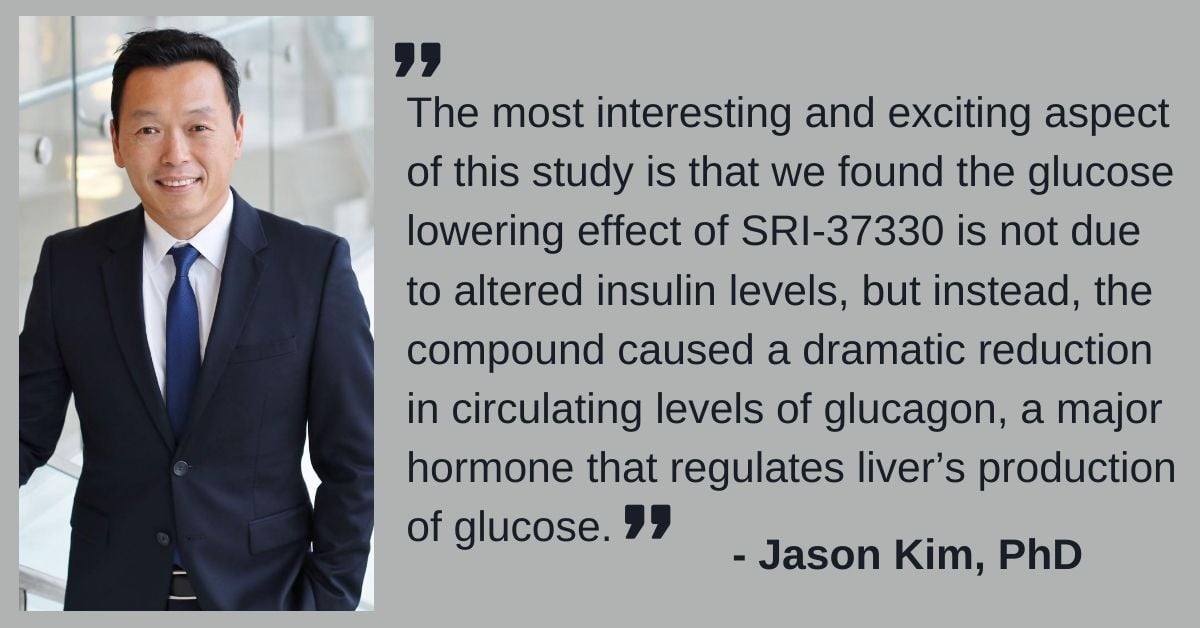The Kim Lab Participated in Newly Published Collaborative Type 2 Diabetes Research That Identified a Potential Oral Treatment
Date Posted: Wednesday, August 19, 2020
Diabetes is characterized by hyperglycemia (high blood sugar), functional loss of the insulin-producing beta cells in the pancreas resulting in lack of insulin to control blood glucose levels, and persistent alpha cell secretion of the glucagon (a hormone that raises the concentration of glucose and fatty acids in the bloodstream). There are currently no therapies available to target these underlying processes.
Type 2 diabetes research in the laboratory of Dr. Jason Kim at the UMass Chan Medical School and a collaborative project led by Dr. Anath Shalev, director of the Comprehensive Diabetes Center at the University of Alabama at Birmingham, and her research team who had discovered a small molecule SRI-37330, have unveiled an exciting new process by which this compound effectively rescues mice from obesity-induced diabetes.
“When obese diabetic mice were treated with an oral dose of SRI-37330 for four weeks, blood glucose levels rapidly declined within a week of treatment and reached near normal levels for the duration of treatment,” said Jason Kim, PhD, professor of molecular medicine and program director of the NIH-sponsored National Mouse Metabolic Phenotyping Center Consortium at UMass Chan Medical School. “The most interesting and exciting aspect of this study is that we found the glucose-lowering effect of SRI-37330 is not due to altered insulin levels, but instead, the compound caused a dramatic reduction in circulating levels of glucagon, a major hormone that regulates liver’s production of glucose.”
Obesity is a major cause of type 2 diabetes. It’s characterized by insulin resistance which affects the body’s ability to regulate glucose metabolism. But the role of glucagon in this disease process and treatment remains largely unknown. This newly discovered compound can be taken by mouth and absorbed by the body, and can potentially be used as a glucagon-lowering therapy for type 2 diabetes.
“Our experiments confirmed that an oral treatment with SRI-37330 causes inhibition of glucagon secretion from pancreas thereby reducing liver’s production of glucose and lowering blood sugars as well as reversing fatty liver disease,” added Dr. Kim.
This collaborative research between The Kim Lab and The Shalev Lab was published in the journal Cell Metabolism describing this newly designed chemical compound. Compared to currently available therapies it may provide an effective new approach to treating type 2 diabetes.
